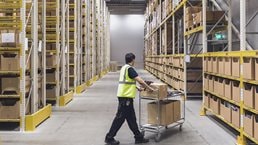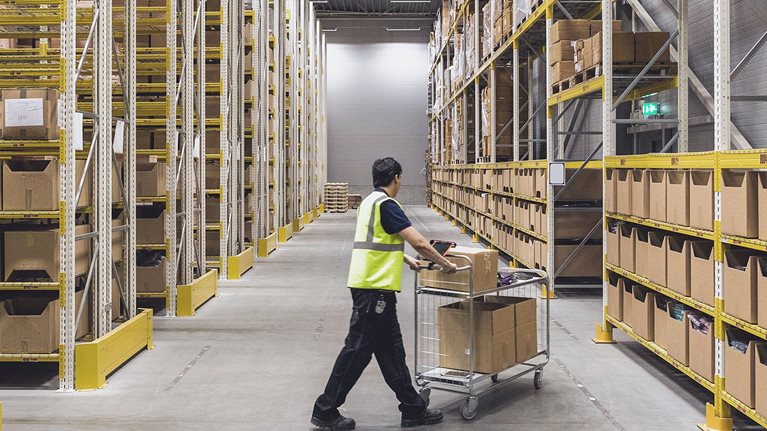At the height of the COVID-19 pandemic, bare supermarket shelves and worldwide shortages of critical personal protective equipment made supply chains headline news. Across industries, companies had little time to address logistics disruptions, shortages of parts and materials, and sudden swings in demand. That required many organizations to rewire their supply chains at short notice—all while keeping their people safe and complying government policies designed to slow the spread of the virus.
Now, as businesses embark on the journey to recovery, supply-chain leaders are telling us that they have no intention of returning to the status quo ante. In the second quarter of 2020, we surveyed 60 senior supply-chain executives from across industries and geographies, asking them about the impact of the pandemic on their operations and their future plans to make supply chains far more flexible and agile.
Would you like to learn more about our Operations Practice?
Preparing to drive change
The overwhelming majority of respondents said that the crisis had revealed weaknesses in their supply chains that they’re now working to address. For example, 73 percent encountered problems in their supplier base, and 75 percent faced problems with production and distribution. In the food and consumer-goods industries, 100 percent of respondents had experienced production and distribution problems, and 91 percent had problems with suppliers.
A whopping 85 percent of respondents struggled with inefficient digital technologies in their supply chains. And while just over half of the executives felt that they had been able to manage supply-chain planning following the abrupt introduction of remote working, 48 percent said the changes had slowed down decision–making in planning (Exhibit 1).

Our group of supply-chain leaders was broadly aligned on the actions they want to take in response to those challenges: about 93 percent of respondents told us that they plan to increase the level of resilience across their supply chain. They intend to do that using a variety of mechanisms, including dual sourcing of raw materials, increasing their inventories of critical products and, to a lesser extent, by near-shoring, dual-sourcing, or regionalizing their supply chains (Exhibit 2).

Respondents also see an urgent need to get better control over their supply-chain technology, which will likely be possible only with a skilled workforce trained to use new digital tools at speed and scale. Some 90 percent of leaders surveyed say they plan to increase the amount of digital supply-chain talent within their organizations, through a combination of in-house reskilling and external hires. Just over half also expect permanent changes to their planning processes in the next normal, such as greater centralization of planning activities, shorter planning cycles, and introducing advanced-analytics techniques. Intriguingly, only 11 percent of respondents said that budgets were a constraint on their ambitions to make these changes, suggesting that resilience requires smart investments, not just pouring money into the supply chain.

Is your supply chain risk blind—or risk resilient?
Making transformative investments
To succeed in the next normal, companies will need more than makeshift, duct-tape solutions that address specific problems. The coronavirus pandemic has already exposed gaps in many existing setups, and it may also drive long-term changes in customer requirements and behaviors. For example, consumers who switched to on-line retail channels during the crisis, or who opted for curb-side and in-store pickup of online orders, may stick to their new behavior well beyond the pandemic. And the desire to retain the environmental benefits that were a byproduct of reduced economic activity may lead to an increase emphasis on sustainability in future business operations.
We believe that leaders should take this moment not just to fix their supply chains temporarily, but to transform them. Reimagining supply chains to avoid past traps and meet future needs will require a more comprehensive approach (Exhibit 3).

To address the desire for increased resilience, companies can consider establishing dedicated supply-chain risk-management functions and processes. Working alongside manufacturing, procurement, and supply chain, these units assess vulnerabilities across supply nodes and apply a robust risk-mitigation framework in response. Actions might include accelerating decentralization, deploying inventory closer to customers, and developing crisis-response plans and capabilities.
And while existing supply-chain risk organizations have typically focused on a narrow range of risks, such as logistics delays or suppliers’ financial stability, the scope of the risk-management function can expand to include factors such prolonged interruptions of cross-border flows, or social and geopolitical disruptions. Managing these risks will demand investment in improved business-discontinuity prediction capabilities, risk-transfer mechanisms, and crisis planning. It may also drive physical reconfiguration of supply chains, particularly for critical components and raw materials.
Similarly, boosting the supply chain’s end-to-end digital capabilities requires a coordinated view across nodes so that companies can connect the dots with the latest digital tools and capabilities. Autonomous planning systems with machine-learning capabilities can base their forecasts on many more factors and learn the “next normal" much faster than traditional approaches for building business continuity, preserving cash, and strengthening supply-chain resilience.
In manufacturing, robots and cobots can increasingly provide additional data to flag problems or identify improvement opportunities. For example, many companies still conduct routine maintenance on major equipment according to a fixed schedule, with little to no visibility into whether action is actually needed. Digital diagnostic capabilities allow for real-time monitoring of equipment, helping lower cost by reducing wasteful maintenance practices. And in product delivery, firms can employ digital logistics practices, using thousands of datapoints to optimize, track, and optimize again with real-world inputs for real-time solutions.
Digitization today can empower firms to reap benefits long into the future. Whether through more accurate forecasts, reduced downtime, or faster delivery and turnaround times, digitization of the end-to-end supply chain will help businesses eliminate inefficiencies, improve responsiveness, and dramatically reduce overall supply-chain costs. It will also be a critical tool in supply-chain organizations’ responses to future challenges. The next normal may see a stronger push for sustainability and reduced environmental impact by customers and regulators, as lower pollution levels have been one of the few fortunate byproducts of reduced activity.
It can be challenging to see these positives in the wake of disruptions caused by the coronavirus; however, the crisis has given companies a unique moment to reimagine operations to create a better future.


